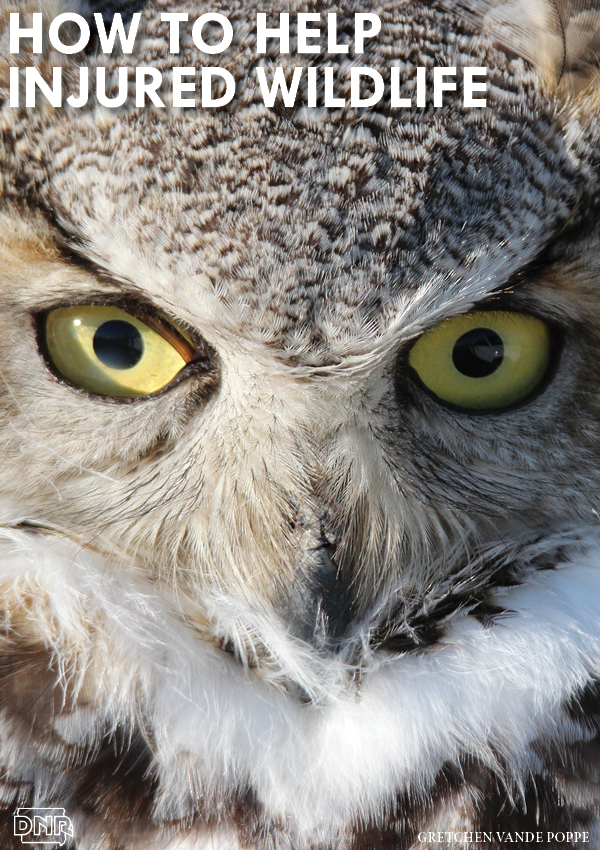 When Pete Vande Poppe spotted a great horned owl along Highway 60 near Alton about a month ago, he knew something wasn’t right. He swung by home to tell his wife, Gretchen. She grabbed the camera and off they went, finding the owl in the grass alongside the road.
When Pete Vande Poppe spotted a great horned owl along Highway 60 near Alton about a month ago, he knew something wasn’t right. He swung by home to tell his wife, Gretchen. She grabbed the camera and off they went, finding the owl in the grass alongside the road.
Knowing that Saving Our Avian Resources (SOAR), a licensed wildlife rehabilitator in Iowa, was presenting at the O’Brien County Conservation’s Prairie Heritage Center later that day, Gretchen called ahead. SOAR gave instructions on how to safely transport the owl. Upon examining the owl, the rehabilitator said the owl had a concussion and cracked beak. SOAR took the owl to nurse it back to health – by the middle of the month, the owl was feeding itself again and is now in the flight pen, getting ready to be released back to the wild.
Contacting a professional, licensed rehabilitator was the right call. If you find a wild animal you believe is sick or injured, follow these tips:
Look for signs of injury or listlessness, but don’t approach the animal or try to help it by yourself – that includes providing food or water.
Instead, call a licensed wildlife rehabilitator or your local animal control staff first. These professionals can direct you, if needed, on how to assist the animal. Or they can gather information from you that will help them locate the animal.
Following these steps aims to keep both you and the animal safe, as injured wild animals may strike out in fear or from pain.
With few exceptions, all wildlife in Iowa is protected and federal and/or state permits are required to rehabilitate injured animals. Iowa’s privately licensed wildlife rehabilitators generally work on their own time to rehabilitate and release animals, while receiving no public funding to help them.
You can also help prevent injuries to wildlife by checking areas for animals if you’re planning an activity that might disturb them – for example, check the tree for nests and animals before cutting limbs or branches from a tree.
Contact information for licensed Iowa wildlife rehabilitators